"a 2-hour flight in ... a mixture of wet snow and freezing rain ... produced no adverse effects on the operation of the airship."
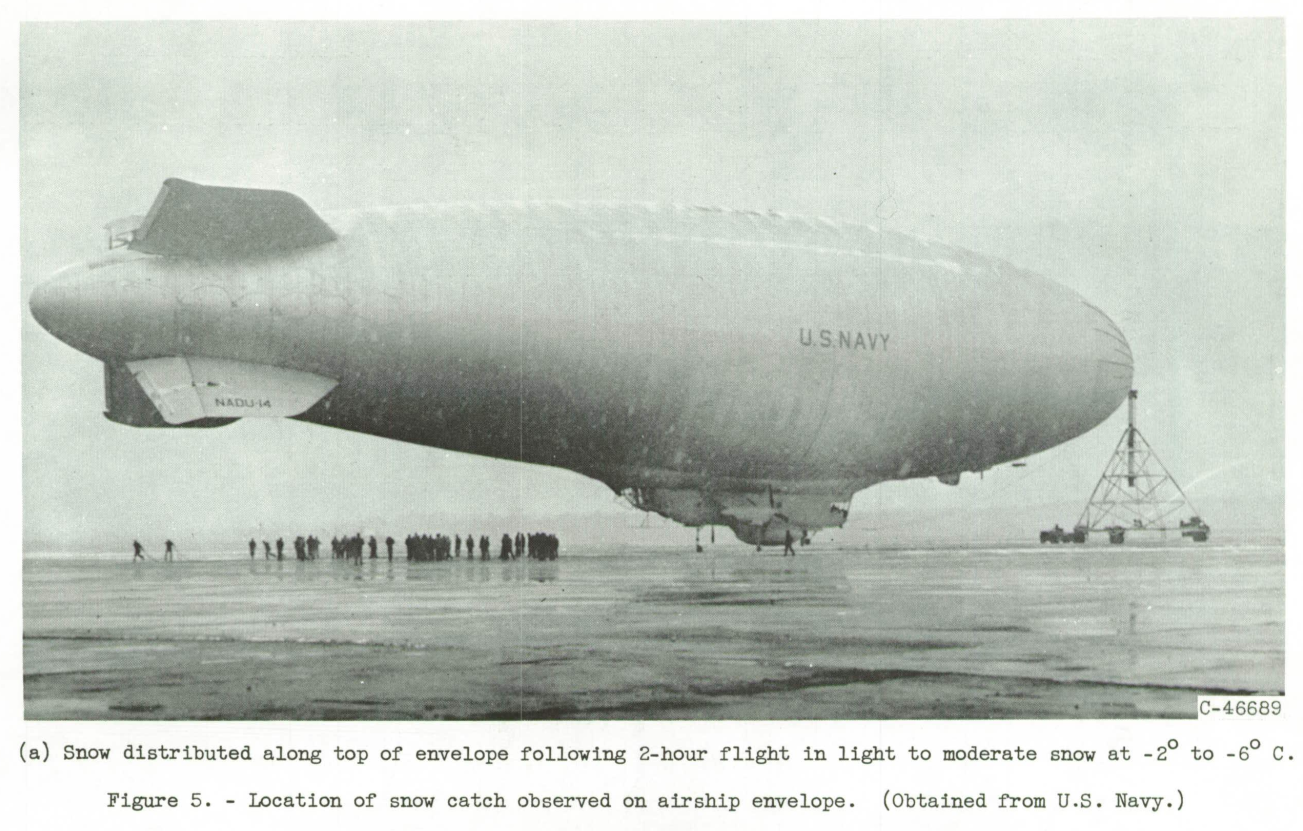
NACA-TN-4220, A Flight Evaluation and Analysis of the Effect of Icing Conditions on the PG-2 Airship
Summary
Icing threats to airships are assessed.
Abstract
SUMMARY
A series of test flights was conducted by the U. S. Navy over a 3-year period to evaluate the effects of icing on the operation of the ZPG-2 airship. In supercooled. clouds, ice formed only on the forward edges of small protuberances and wires and presented no serious hazard to operation. Ice accretions of the glaze type which occurred in conditions described as freezing drizzle adversely affected various components to a somewhat greater extent. The results indicated, a need for protection of certain components such as antennas, propellers, and certain parts of the control system.
The tests showed that icing of the large surface of the envelope occurred only in freezing rain or drizzle. Because of the infrequent occurrence of these conditions, the potential maximum severity could not be estimated from the test results. The increases in heaviness caused by icing in freezing rain and drizzle were substantial, but well within the operational capabilities of the airship.
In order to estimate the potential operational significance of icing in freezing rain, theoretical calculations were used to estimate: (1) the rate of icing as a function of temperature and rainfall intensity, (2) the climatological probability of occurrence of various combinations of these variables, and (3) the significance of the warming influence of the ocean in alleviating freezing-rain conditions. The results of these calculations suggest that, although very heavy icing rates are possible in combinations of low temperature and high rainfall rate, the occurrence of such conditions is very infrequent in coastal areas and virtually impossible 200 or 300 miles offshore.
Discussion
One of my mentors once told me (with a rich Texas drawl), "A blimp don't gather no ice". Well, true enough for typical cloud drop sizes (10 to 50 micrometer in diameter), but freezing rain and snow are threats to airships.
As we saw in the review Bodies of Revolution, very large bodies can have zero impingement of small drops. This is the case for an airship moving through a typical cloud.
As we saw in the review Component Ice Protection, the smaller components (propellers, instruments, etc.) may require ice protection.
Here we will see flight tests results. There are also rather detailed appendices analyzing the of threat of freezing rain that are not detailed herein.
INTRODUCTION
The nonrigid airship ("blimp") has been adapted to carry aircraft detection equipment for use in the air defense system. The aircraft-early-warning mission requires that picket aircraft endure all types of weather conditions while maintaining a continuous watch from a particular area. In support of this mission a project was established by the Office of Naval Research to evaluate the all-weather capabilities of the ZPG-2 airship (975,000 cu ft envelope)(fig. 1). The flight testing was assigned to the Naval Air Development unit at the United States Naval Air Station in South Weymouth, Massachusetts. The NACA Lewis laboratory was requested by the Office of Naval Research to assist the Navy by supplying instrumentation and technical assistance in analyzing and studying the icing problem as applied to airships.
Weather conditions considered hazardous to airborne operations are those conducive to ice and snow accumulations on various parts of the airship and those affecting the operational capability of the airship, such as winds and turbulence. The flight tests and study reported herein were conducted only for the purpose of investigating the airworthiness of the airship in various types of icing conditions.
Flights in Rime Ice
The rime icing conditions were found in typical supercooled clouds with temperatures ranging from -2 to -10 C and liquid-water contents from 0.1 to 0.5 gram per cubic meter. The ice formations were different from those produced in freezing drizzle in that the rime accretions were confined to the forward edges of small objects only and, unlike glaze-ice formations, had less tendency to spread. A comparison of the two types of ice formation is shown in the flight photographs of figure 3.
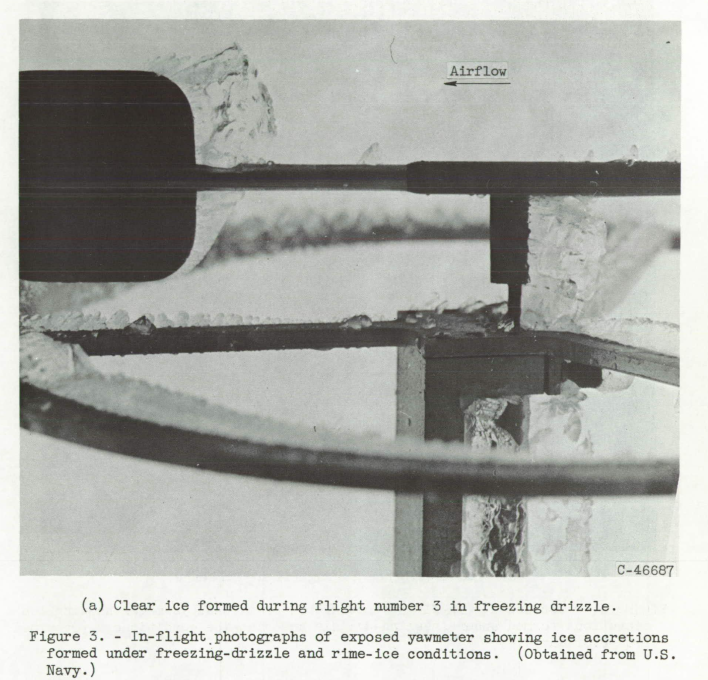
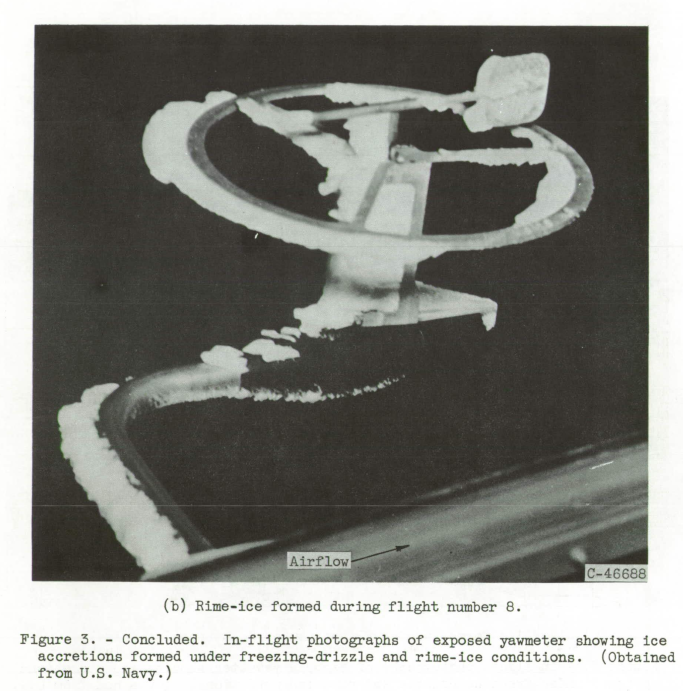
Flights in Snow
Several flights were conducted in moderate to heavy snow with little or no in-flight effects on the airship. Snow loads accumulated while an airship is on the mast have long been recognized as a serious problem. In flight, however, most of the snow catch blows off at the higher air-speeds, except possibly very wet snow. The results of a 2-hour flight in light to moderate snow at -2 to -6 C are shown in figure 5(a). A small catch estimated to be about 1000 pounds can be seen distributed along the top of the envelope and in the catenary seam along the side. On other flights snow was observed only on the top, between and aft of the fin area, as shown in figure 5(b).

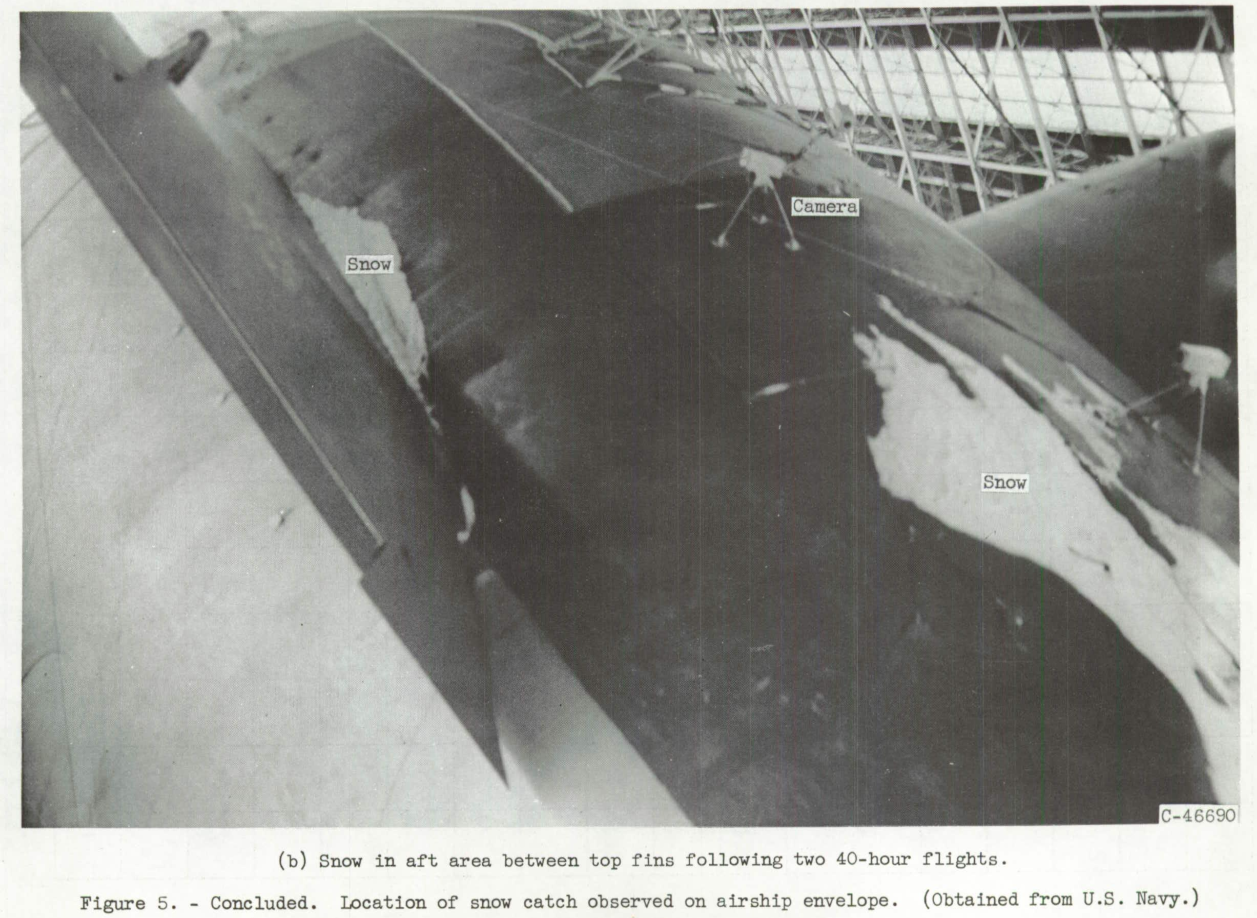
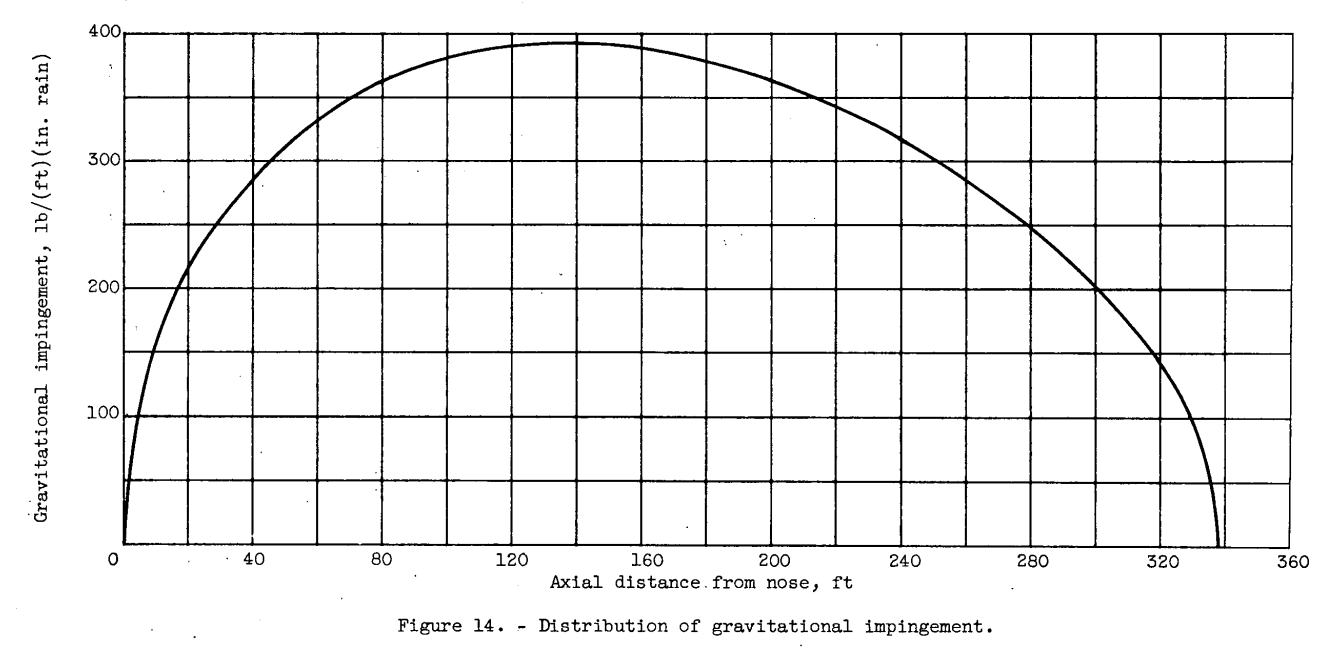
CONCLUDING REMARKS
In test flights conducted by the Navy to evaluate the effects of ice accretions on the ZPG-2 airship a number of typical icing conditions were encountered. While the airship was exposed to these conditions, ice formed on various components but presented no serious hazard to the operation of the airship, although some potentially unsafe situations developed. The more common rime ice formed only on the forward edges of small protuberances and wires without causing appreciable concern. Ice accretions of the glaze type which occurred in what was described as freezing drizzle adversely affected various components to a somewhat greater extent. Protective designs for some of the affected components appeared desirable to assure safe operations.
A study of the ice accretion problem for airships indicated that in addition to component icing a problem could develop from an excessive ice load on the large surface area along the top of the envelope which would occur only in conditions of freezing rain. This potentially hazardous situation was not adequately investigated in the flight tests because of the infrequent occurrence of these conditions. However, the tests verified that ice can form. on the top of the envelope when the drop sizes approach those characteristic of freezing rain. During these flights the ice formations did not produce a sufficient increase in airship heaviness to become an operational problem.
The calculations presented in this report show that very heavy ice loads can be collected under more extreme conditions of rain intensity and temperature than those encountered during the flight program. The operational significance of these hazardous conditions depends on the frequency of their occurrence. In a search for all types of inclement weather the flight test program demonstrated the low probability of these situations occurring over land areas along the northeastern coast of the United States. The probability is further evaluated in this report using several years of meteorological data from land areas.
The calculated icing probability curves and the calculated effect of warming over the sea are somewhat speculative. Actual numerical values are therefore uncertain, but the following qualitative conclusions of operational significance may be stated with considerable confidence:
(1) It is possible to encounter very heavy rates of icing under conditions of high rainfall rate and low temperature.
(2) Statistics on rainfall rate and temperature in freezing rain indicate that combinations giving rise to hazardous icing rates may be expected in from 1 to 5 percent of freezing-rain occurrences over land areas in the northeastern United States. Since freezing rain occurs in this area in only about three to five storms per year, the probability of severe icing is very small.
(3) Because of the warming effect of the sea surface, the probability of encountering hazardous Icing in freezing rain decreases rapidly with distance offshore, becoming negligible at 200 to 300 miles.
(4) The effect of freezing rain in aircraft-early-warning operations is likely to be confined to arrivals and departures, when the airship is over land or a short distance offshore. Hazardous icing during these phases of operation can probably be avoided with the aid of weather forecasts, since the synoptic conditions required for freezing rain can be forecast satisfactorily for short periods.
Citations
Eight citations were found for NACA-TN-4220 at scholar.google.com.
NACA-TN-4220 cites several of the publications in Bodies of Revolution
Related
This is part of the Porter Perkins series.
Notes
-
Lewis, William, and Perkins, Porter J.: A Flight Evaluation and Analysis of the Effect of Icing Conditions on the PG-2 Airship. NACA-TN-4220, 1958. ntrs.nasa.gov ↩